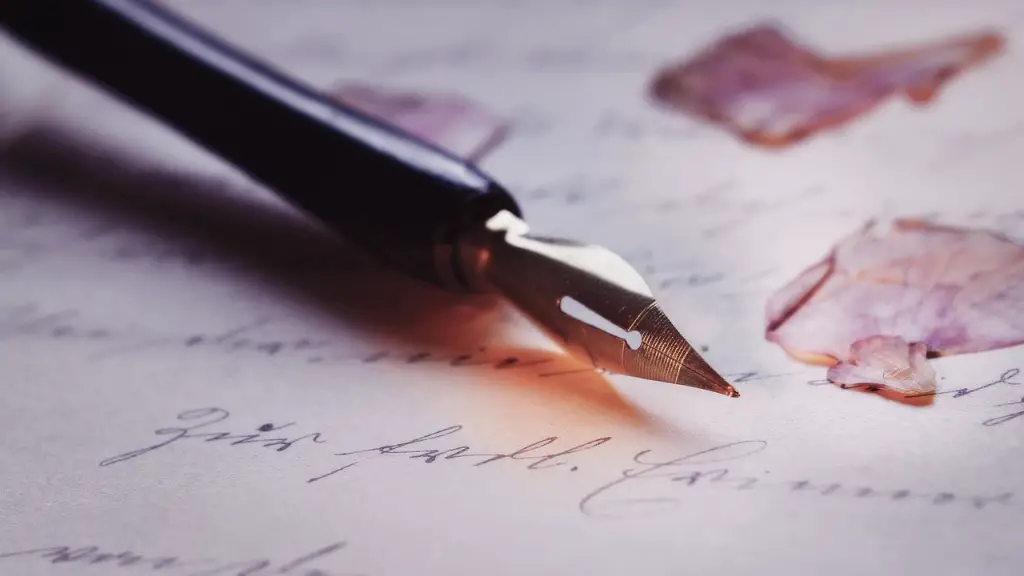Introduction
In “How to Read Poetry like a Professor”, Thomas C. Foster explains in detail how readers can gain greater understanding and appreciation of poetry by learning the fundamentals of poetry analysis. Essentials to Foster’s approach include being aware of poetic conventions; exploring the instances of connotation, diction, imagery, and figurative language; and recognizing the ways in which a poem is shaped by the conventions of particular genres. By learning these keys to comprehending poetry, readers can develop their ability to read deeply, with insight, and with a heightened appreciation of poetry.
Connotation
Connotation is a type of suggestion that can add depth to the interpretation of a poem. As Foster explains, a reader needs to ask questions beyond the literal meanings of words. The implications of each word must be understood to comprehend the poem. The connotative meaning of words in a poem can provide additional insights into the poem’s themes, messages and emotions.
In addition to recognizing the connotations of words, readers must ask questions about the implications of the overall text. For example, the context of a poem may be the death of a loved one or the end of a relationship. Questions to consider in these cases include “What is the speaker’s attitude toward the situation?”, “How do the images in the poem reflect the speaker’s emotions?”, and “How do the words and images used suggest the speaker’s attitude?” In approaching a poem this way, readers are better able to see beyond the literal meaning of the poem.
Diction and Imagery
Foster states that diction and imagery are the two most important components of poetry. Diction is the choice and arrangement of words. It’s important for readers to understand the literal meaning of words in a poem but also the connotative meaning since that can lead to a deeper and richer interpretation. In addition, certain words evoke emotions, which can enhance the reader’s understanding and appreciation of the poem.
Imagery is the vivid description with which the poet describes the setting, characters, and action. It must be described and interpreted with an understanding of the connotations of the words used. Imagery enables readers to experience the poem as if they were in it. By concentrating on the poem’s use of diction and imagery, readers can better appreciate its suggestions and nuances.
Figurative Language and Genre
Figurative language is used throughout poetry and often conveys certain messages that might not be the same if the words were taken literally. Irony and metaphor are some of the more common literary devices that poets use to create irony, add depth and texture, and provide a window through which readers can better comprehend the poem. Symbolism is also a powerful device often used by poets to communicate ideas without having to explicitly articulate them.
The genre of a poem is determined by its form, content, and conventions. The form of a poem is determined by the metre and the line lengths, while the content consists of the topics and the language used to describe them. Certain genres, such as sonnets and haikus, have particular conventions that must be adhered to for a poem to be considered a part of that genre.
By understanding the conventions of genre, readers can better appreciate and understand the poem’s form and content. By knowing, for example, that a sonnet must have fourteen lines and specific rhyme scheme, readers can better understand the poem’s messages.
The Poet’s Voice
The poet’s voice is often evidenced in a poem in the form of an implied narrator. Through their diction, imagery, and figurative language, poets convey ideas and feelings that may not be explicitly stated. They provide insight into the poet’s emotional state, life experiences, and opinions. Foster explains that in order to truly understand a poem, readers must develop an understanding of its form, content, and structure, in addition to the poet’s voice.
Unlock Hidden Messages
Foster points out that a poem is more than the sum of its parts. He encourages readers to ask questions and look for underlying meanings and messages. Re-reading and analyzing a poem can help readers unlock its hidden messages, uncover layers of meaning, and gain an even deeper appreciation of the poem.
Thematic Patterns
By understanding the key elements of the poem, such as connotation, diction, imagery, figurative language and genre, and by paying attention to the poet’s voice and hidden messages, readers can better discern the poem’s thematic patterns. Foster explains that poetry often contains patterns of meaning that run throughout the poem, rather than individual messages in individual lines or images. He also encourages readers to recognize and appreciate the ways in which a poem transcends its literal meaning.
The Musicality of Poetry
The musicality of poetry is another key element of poetic appreciation. Through its use of rhythm, rhyme, metre, and sound effects, a poem can become more than just words on a page. As Foster explains, sound is fundamental to a poem’s overall effect and can be used to create an experience for readers. By attending to the musical elements of a poem, readers can better understand its meaning and gain an appreciation of its beauty.
Tips on Finding Meaning
Foster provides valuable tips on how to find meaning in a poem. He suggests close reading of the poem multiple times, looking for nuances in the text, and noting devices such as metaphor, symbolism, and alliteration. He emphasizes the importance of re-reading a poem and looking for shifts in tone and attitude, as well as connections between images, language and ideas. He also encourages readers to look for overarching themes in the poem, such as life and death, love and fate.
Educational Opportunities and Resources
Foster points out that there are ample educational opportunities and resources available for readers who wish to explore the appreciation of poetry further. He encourages readers to avail of online and learning resources, such as audio recordings of classic poems, and to take part in educational seminars, workshops and classes on how to read poetry. By doing so, readers can further develop their understanding and appreciation of poetry.
The Context of Poetry
Foster explains that a poem should be read within the context of the poet’s work and within the context of the larger genre of poetry. He encourages readers to read a variety of poems in order to gain a fuller understanding of the genre and to be able to compare and contrast the different approaches. Further, he suggests that readers take time to read poems in the original language and to compare translations in order to gain a greater understanding of the text.
The Role of Criticism
Foster believes that criticism can be an important tool in developing an appreciation for poetry. He suggests that readers should read criticism and analysis of poems, in order to understand the different stances that critics take on particular poems. By doing so, readers can apply the critical perspective to their own reading of the poem and gain a more complex understanding of it.
Conclusion
Foster’s “How to Read Poetry Like a Professor” provides readers with an important guide on how to analyze and appreciate poetry. By following his expert advice on connotation, diction and imagery, figurative language and genre, the poet’s voice, unlocking hidden messages, thematic patterns, musicality and the context of poetry, readers are better able to gain a deeper and richer appreciation of poetry. Criticism is also a valuable tool for developing a depth of understanding. By understanding the fundamentals outlined by Foster, readers can gain a greater appreciation of the beauty and complexity of poetry.



